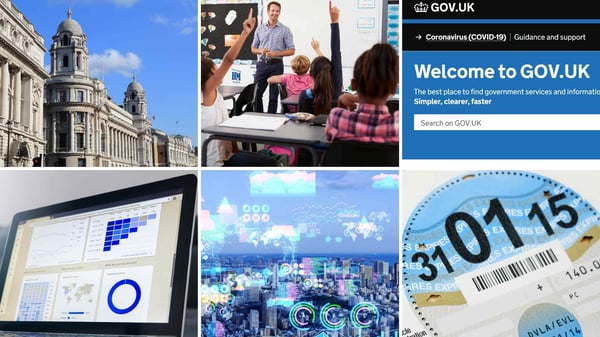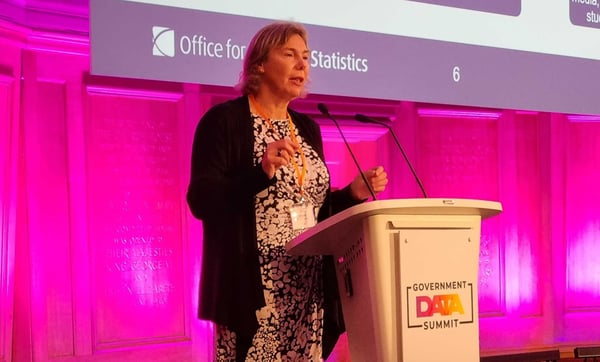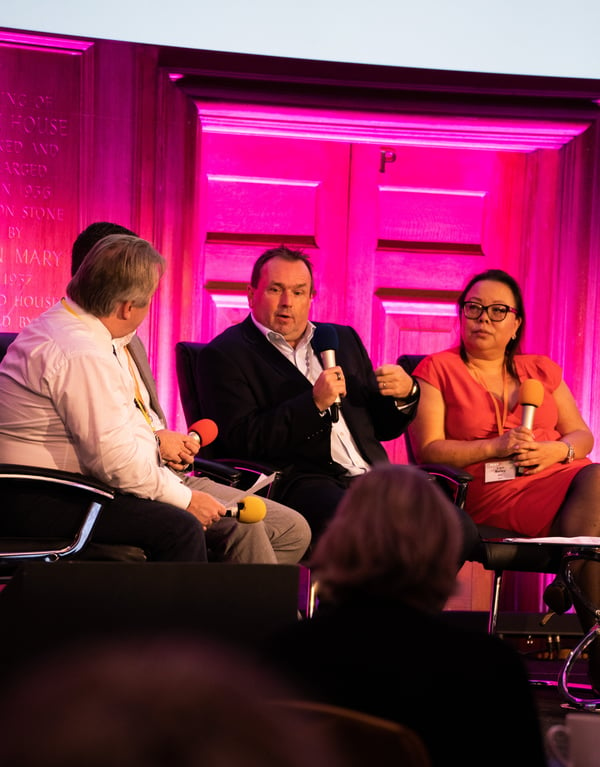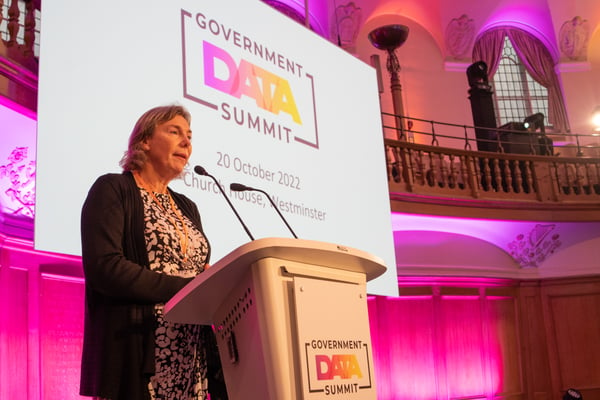The role of Digital Twins in the public sector
Why are Digital Twins gaining popularity within the public sector - and what role can they play in supporting the Government's levelling-up and climate change agendas?
These issues were discussed by a team of experts during a recent Government Data Show panel, including Sarah Hayes, Climate Resilience Demonstrator (CReDo) Project Lead at the Centre for Digital Built Britain (CDBB), Olivier Thereaux, Head of Research and Development at the Open Data Institute (ODI), and Will Varah, Modern Methods Programme Director at the Infrastructure and Projects Authority. The session was moderated by David Wilde, Government Transformation magazine's General Manager.
What is a Digital Twin?
Digital Twins use real world data to create simulations that can predict how an object or system will perform, helping to inform policy.
They are already seeing widespread use in manufacturing and construction to model complex system-wide challenges. However, they require vast amounts of data to make them work - and in a public sector context, depend on pooling data from multiple government sources. This highlights that there are key ethical considerations that require addressing as part of any wider adoption.
In 2018, the Centre for Digital Built Britain and Digital Framework Task Group published a values framework, the ‘Gemini Principles’, with the aim to guide the development of the UK’s national Digital Twin. The principles are purpose, trust and function, meaning that any Digital Twin developed must have a clear purpose, must be trustworthy, and must function effectively.

Will Varah, Modern Methods Programme Director at the Infrastructure and Projects Authority highlighted the importance of the Gemini Principles as the ethical framework underpinning the work of professionals like him and his peers and guiding how they should behave.
In addition, he said that full transparency with stakeholders from the outset is also essential to ensure that Digital Twins are developed ethically and fairly.
“We need to be engaging with the issues around privacy, security, confidentiality and commercial interests and different stakeholders groups that will be invested in different aspects of that,” Varah explained. “It’s challenging, but we need to collaborate and engage with the complexity and the detail and find ways of setting that out in meaningful ways to the range of stakeholders.”
Developing and implementing Digital Twins
 Sarah Hayes, CReDo Project Lead at CDBB also emphasised the importance of tackling privacy, confidentiality and security from the very outset of a Digital Twin project.
Sarah Hayes, CReDo Project Lead at CDBB also emphasised the importance of tackling privacy, confidentiality and security from the very outset of a Digital Twin project.
“Don’t delay it,” she said. “You need to get all parties around the table to discuss those issues with the lawyers, and when you're talking with them you need to very clearly explain what your use cases and what the benefits are, don't assume that they will understand it from the off.”
Practical examples of doing this include using visualisations that can help stakeholders ‘see’ what an actual Digital Twin will look like. Hayes also said that privacy, security and confidentiality should be baked down into contracts. Although issues surrounding confidential data can be restrictive, including data licences that can be reviewed annually may allow some degree of flexibility.
“Obviously that means getting everyone around the table again, but you have to do that because you need to build trust from the very beginning,” Hayes said, adding that once stakeholders see the benefits of the projects, that may give way to further progress.
Showing positive and ethical outcomes is essential to advancing Digital Twin projects. Like is the case with data, the value of Digital Twins can only be appreciated through its applications and how they will help making better decisions on physical infrastructures. The greatest value for society will come when there is an ecosystem of connected Digital Twins, said Varah.
Olivier Thereaux, Head of Research and Development at ODI added: “If you ask the experts, the economists, they will say that essentially data, and to some extent that extends to Digital Twins, at rest inherently has no value. It is when it is used, and likewise for Digital Twins, that we are going to see the realisation of its value.”
Can Digital Twins help tackle climate change?
A question posed by Wilde to the panellists at the Government Data Show roundtable was the role they expected Digital Twins will play in the Government’s long-term levelling-up and climate change agendas.

Offering “a mix of massive optimism but also humility”, Thereaux said that Digital Twins have “enormous” potential to help model, understand and make decisions that can help mitigate and fight the effects of climate change.
Although they do not fit into the Digital Twin definition, some technologies such as sensors and modelling are already informing decisions with issues such as heat islands, which are urban areas experiencing higher temperatures than their surroundings.
Digital Twins could also be used to model some of the decisions of the levelling-up agenda. However, Thereaux also warned caution: “Yes, we could use Digital Twins to model a lot of those big decisions about investment, about changing our lives. But we also need to be a little bit humble about our ability to model such incredibly complex systems.”
“There's potential already at relatively small scale,” continued Thereaux. “But we need to be careful not to try and say ‘yeah, Digital Twins, we're going to be doing Cybersyn and have a big button to fix everything through models’, because that would be a big mistake.”
As project lead of the CReDo project at the National Digital Twin programme, Hayes and her team are looking at how the UK can increase system resilience in the face of future extreme weather events caused by climate change.
Hayes sees both climate change and levelling-up as systems-based challenges and the question lies in understanding how multiple interventions add up and how they interact with each other in order to address them. In her view, Digital Twin models can help prioritise interventions and make better decisions, starting with small and specific problems and scaling progressively. But to achieve that, both the public and private sectors should work more collaboratively.
“I do see a lot of siloed thinking: government thinks in departments, and industry thinks in sectors. I think we need to break that down, it’s a cultural change,” Hayes said. “We can't solve every problem at once but there are small steps we can take with the data available and identifying what data needs to be made available in the future to help us piece together what the impact of our interventions are.
“When I see strategies that seem to be very separate points, I feel disappointed because I want to see how that fits together into the bigger picture. And I do think Digital Twins can help with that, we need to be fairly ambitious in the way that we approach it.”
Article photo credit: Shutterstock.





